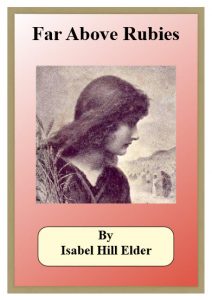IN the following biographical sketches of the more famous women of Israel an attempt has been made to supply what can hardly be said to exist already: a short historical work which might enable the reader of the Bible to realize that the women of both the Old and New Testaments were characters worthy of our highest esteem and very little removed in feeling and thought from ourselves. If this little work has any real value it is as a picture of manners and customs, a drama in which the personages are living characters and not mere historical names.
In the beginning woman was the equal of man in every respect; in patriarchal times she had an independence surpassing even today, and was entrusted with the administration of her husband’s property as well as her own.
The women of heathen nations were the first to lose this independence which was retained by the women of Israel until the captivities. Upon the return of the Jewish captives from Babylon to Palestine a marked change is discernible; family life was never again the same. The women of both Houses of Israel had become degraded to the level of the women of their captors, and a woman was viewed by her husband as a mere chattel and his slave.
Perhaps no better illustration of the gradual decline in the status of women of ancient times could be found than that to be seen in the Gizeh Museum, near Cairo. Here there is displayed a long line of Egyptian monarchs in stone; at the end where the most ancient were placed the queen sat by the side of the king, of equal size and importance. A few centuries down the line the queen is found to be smaller than the king; progressing farther down the line the queen is found to be much smaller and to sit on a lower level than the king.
Lastly, the queen is no longer carved out of a stone block, she is merely sketched in portraiture on the stool upon which the king sat or upon the arm of his throne.
